Berlin in Books
Reviews of our favourite fiction and non-fiction books about Berlin. These books can generally be ordered via Amazon and Buecher.de, but we recommend you support Berlin's fantastic local bookshops by ordering there - they can have any title ready for you within a day or two, at no extra cost. Kulturkaufhaus Dussmann on Friedrichstrasse is the ultimate temple for book nerds - but try spreading the love by ordering at any small Kiez bookshop.
Mauer
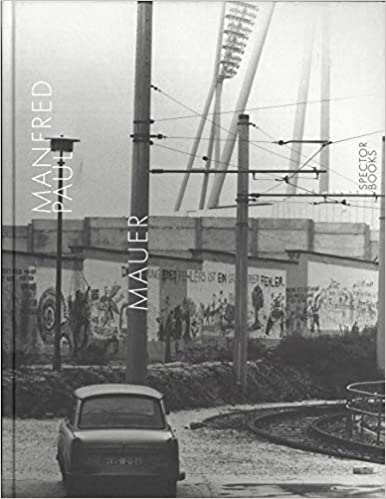
East German photographer Manfred Paul was always fascinated by forgotten corners of Berlin - in the 1980s he liked to take pictures of run-down residential courtyards, knowing that one day they would all be changed, renovated, or demolished. The fall of the Wall (Mauer in German) took everyone by surprise, and the process of removing the physical evidence of decades of deadly separation was very fast. Between November 1989 and December 1990, Paul documented the remnants of the Wall as they were being dismantled, resulting in this impressive collection of black and white images of abandoned border posts, watchtowers, patrol roads and the gaping void between east and west. By now, this gash through the city has all but vanished, making these images valuable reminders of how the Cold War determined this city.
'Mauer' (2019, ISBN 9783959053518) by Manfred Paul is for sale for €36 at Dussmann, other major bookshops and via www.spectorbooks.com.
Berlin – Damals und Heute
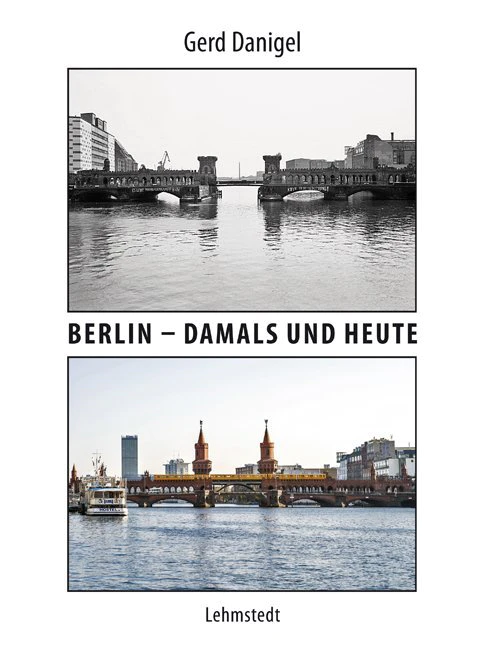
The exceptional changes that Berlin has gone through since the fall of the Wall are very nicely portrayed in “Berlin – then and now”, where black and white street scenes from the late 1980s are placed beside the full-colour modern-day views. Gerd Danigel, a professional photographer who grew up in the GDR and has been snapping Berlin since 1978, returned to the exact locations of his older photos, revealing a transformed city. Gone are the scars of the war, the gaps between buildings and the neglect of the GDR years – renovated buildings and bridges returned to their former lustre. Residential streets void of life are bustling with traffic again, tired-looking shops are rejuvenated, selling things nobody thought they needed in the eighties. Even individual trees that have grown tall in the three intermediate decades can be recognised. Locals and regular visitors to Berlin have of course been witness to these slow changes – but seeing the two eras so starkly juxtaposed on paper is something of a shock to even the dedicated Berlin-fans.
'Berlin – Damals und Heute' (2018, ISBN 9783957970770) by Gerd Danigel is for sale for €15 at Dussmann and other major bookshops.
On Tempelhofer Feld
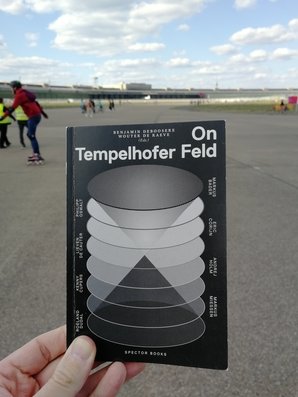
Tempelhofer Feld, Berlin's former city-centre airport that's now a beloved park with strict restrictions on what can be done there, is regularly in the news as politicians eye the potential for building tens of thousands of apartments there in order to relieve Berlin's housing crisis a little. The "On Tempelhofer Feld" project, the result of an academic workshop and photography project, consists of a interview booklet with architects (many of them eager to start building), geographers and city planners, accompanied by a charming photo book showing how Berliners use the park on a sunny day - for kiting, biking, practicing fly-fishing or just lazing around. Most informative is social scientist Andrej Holm who focuses on how the park can play an important role in bringing the fragmented and gentrified social scenes of the surrounding neighbourhoods together - he argues that instead of just the authorities and investors, these residents should be involved in any future decisions.
'On Tempelhofer Feld' (2016, ISBN 9783944669649) edited by Benjamin Deboosere and Wouter De Raeve is for sale for €26 at Dussmann, other major bookshops and via spectorbooks.com.
Berlin Alexanderplatz
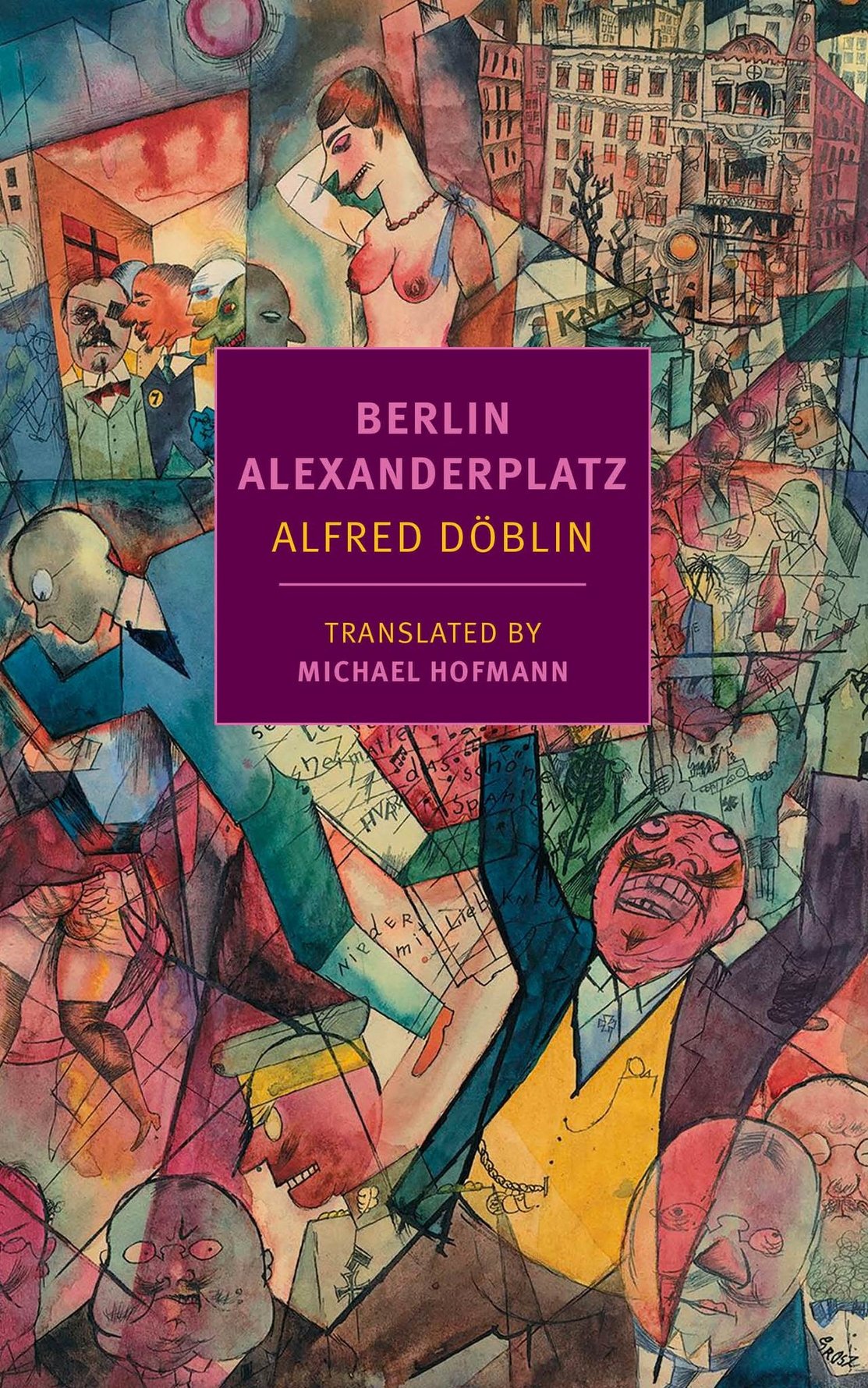
When convicted murderer Franz Biberkopf is released from Berlin's Tegel prison, he's determined to become a respectable citizen and behave well, this time. Unfortunately, after initial success in keeping clean, fate intervenes and the temptations and pitfalls of the rough area around 1920s Alexanderplatz square soon entangle Biberkopf, dragging him down. Alfred Döblin's legendary novel from 1929 is one of the best novels about Berlin and the ill-fated Weimar Republic, and is particularly hard to render in English, with its local Berlinerisch vernacular. Now wonderfully translated for the first time in almost 90 years by award-winning poet Michael Hoffman, the novel is finally made accessible to English speakers, with sparkling conversations and memorable insights into the workings of the humans inhabiting 1920s Berlin.
"Berlin Alexanderplatz" (1929, New York Review Books Classics, ISBN 9781681371993) by Alfred Döblin, new 2018 translation by Michael Hoffmann, is for sale online and at major bookshops from €14.
Berlin (Cityscopes)
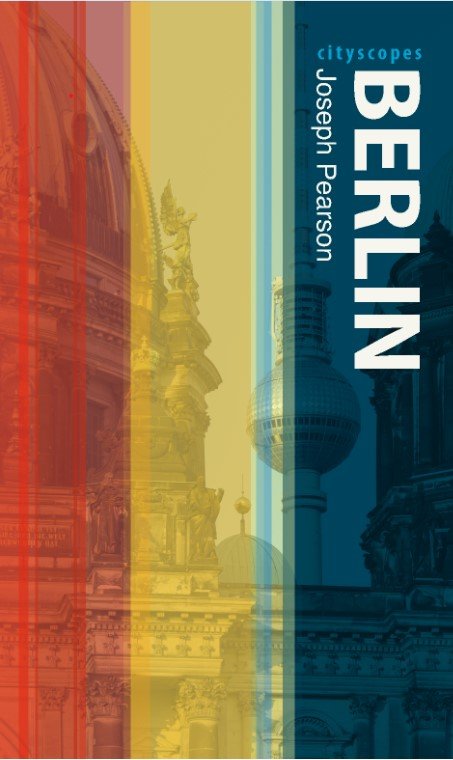
More than in other young cities, Berlin's history can be perplexing and rather heavy, and best understood with a knowledgeable guide to hold your hand gently. The Cityscopes Berlin guide, written by Berlin-based journalist and cultural historian Joseph Pearson, does just that. The first half of his book delves deep into history, explaining how and why Germany's capital became what it is now, covering everything from the Prussian era, the two World Wars and the rise and fall of the Wall to the recent influx of refugees and the current 'Berlin Renaissance'. In the second half, a series of often personal essays conveys what makes Berlin so special today. The flâneur Pearson leads you around all sorts of neighbourhoods, in west and east, taking in memorials, museums, monuments, theatre, tunnels, bunkers, festivals and parades-cum-demonstrations, before ending with handy listings. Illustrated with over 118 often intriguing photos, this book is a recommended companion for wandering through Berlin's past and present.
"Berlin (Cityscopes)" (2017, Reaktion Books, ISBN 9781780237190) by Joseph Pearson is for sale online and at major bookshops for €17.
Europe By Rail

A simple thought experiment can turn your dreary daily train commute into an epic international adventure - by realising that the rails you're using are directly connected to places as far flung and exotic as Odessa, Vladivostok and even Vietnam. Staying slightly closer to home, the 15th edition of the Europe By Rail guide is a fascinating collection of 50 annotated rail routes through Europe, with travel practicalities for en route as well as plenty of historical details and travel prose for in the armchair at home. The book takes you and your imagination through endless Nordic forests, along sun-baked coastlines, over wild Alpine passes and across the Spanish plains. Several selected routes pass right through Berlin as part of longer voyages to Salzburg, to Cologne via the Harz mountains, to Lviv in Ukraine, and from Hamburg to Budapest. Eloquently written by two well-travelled, rail-hugging Berliners, there's no better book for daydreaming on your daily commute - it may just inspire you to stay on the train and head off on an adventure.
"Europe By Rail - The Definitive Guide" (2018, Hidden Europe Publications, ISBN 9783945225011) by by Nicky Gardner and Susanne Kries is for sale for around €20 at major bookshops and Amazon. See also www.europebyrail.eu.
Berlin Mit Vergnügen
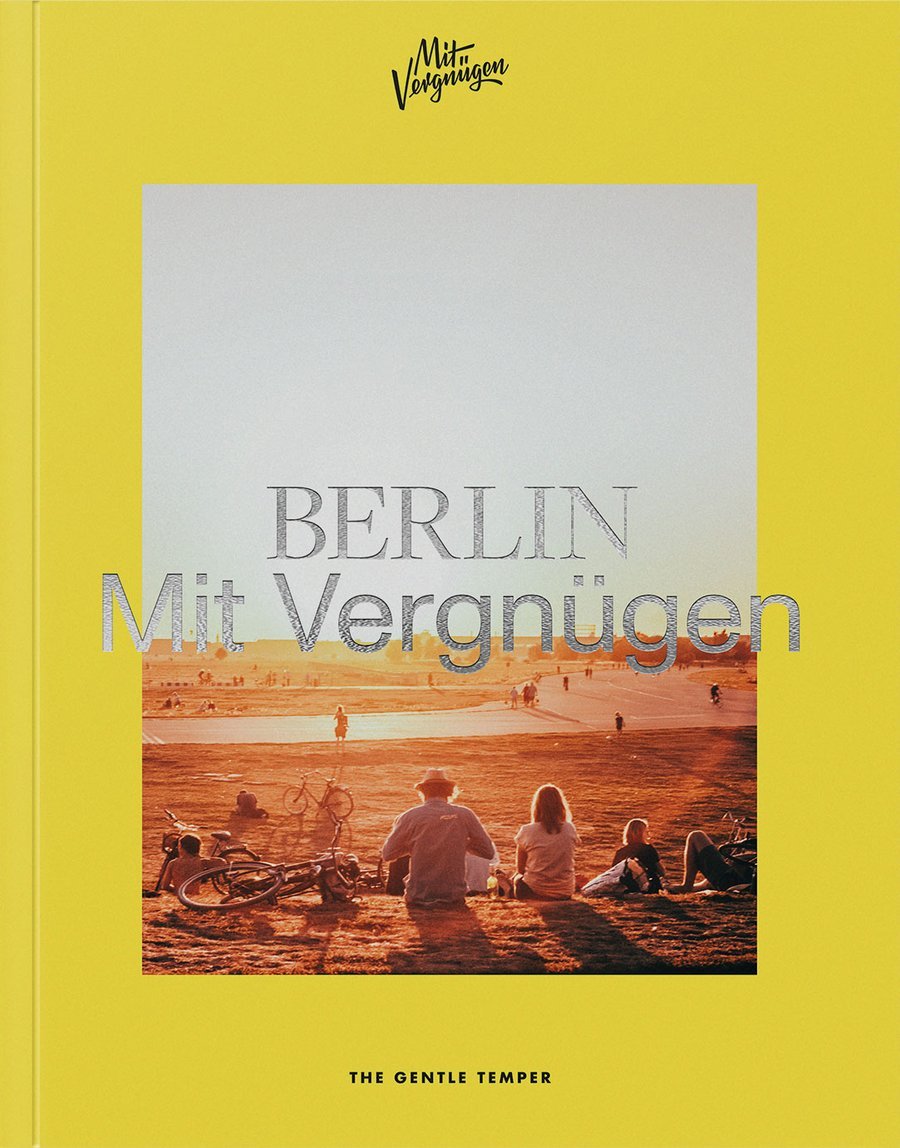
For the German speakers among us, the new 336-page book by the team behind the witty Mit Vergnügen ('with pleasure') blog is a true declaration of love to this city, an anthology of everything that makes Berlin so special. With dedicated reviews and photography for each place and experience, there's plenty to discover; from the perfect breakfast café to that amazing but too-pricey restaurant to take your (paying) parents, from party spots for mindless revellery to bars that were simply made to drown your latest heartbreak in Pfeffi shots. There are reviews of speciality shops, interesting free things to do (cemetary stroll, anyone?), a nd useful options for freezing or rainy days. The book ends with some attractive Kiez (neighbourhood) walks and a selection of daytrips into surrounding towns, woods and lakes. If you're not a Berlin-lover yet, you will be after reading this. As longtime fans of the blog, we're used to clicking around their online maps before heading into a part of town we've neglected for too long, so having hundreds of highlights bundled together in this attractively designed book makes us very vergnügt indeed.
'Berlin Mit Vergnügen' (2019, ISBN 9783947747115, in German) by Matze Hielscher (ed.), Daliah Hoffmann & Wiebke Jann, is for sale for €22 at Dussmann and other major bookshops as well as via www.thegentletemper.com
Berlin in the Cold War - 1959 to 1966
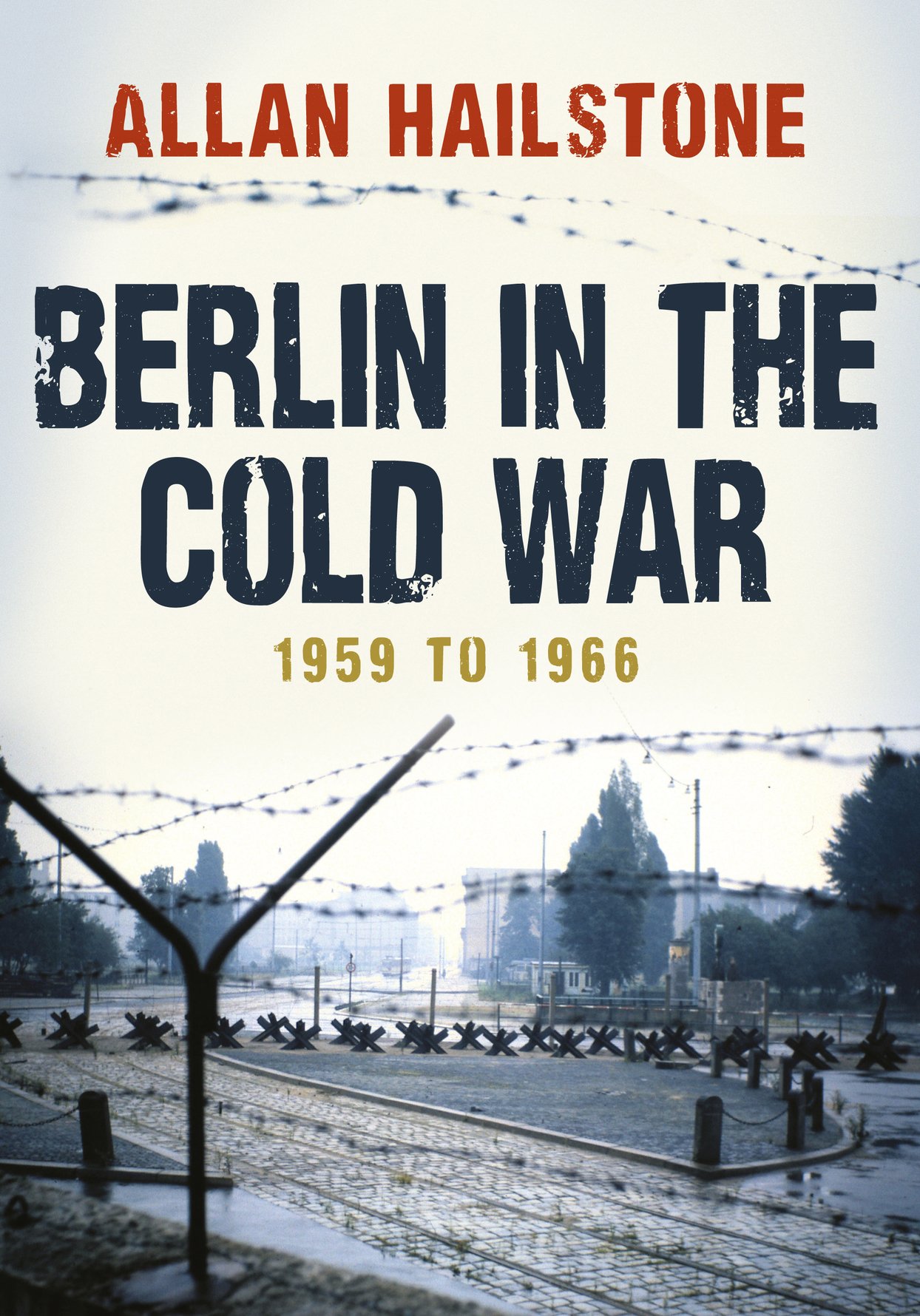
British photography enthusiast Alan Hailstone had already captured many of Europe's beauty spots on camera when he came across a library book about Berlin, and his interest in the raw ugliness of the place lead to his first visit in 1959, two years before the construction of the Wall. While the streets in the three western sectors of Berlin were a riot of neon lights and colourful advertisements, the drab Soviet-run eastern sector was mostly void of traffic and still had piles of rubble from the war lying around. Hailstone was fascinated by Berlin and returned many times, before and after the Wall was built, resulting in this fascinating collection of 200 photographs, each with a description or anecdote. There are 'before and after' images of the sector crossings, pictures of women recycling bricks from rubble in the East, propaganda on Stalinallee, the early stages of the Wall, the desolate bombed-out areas around Gendarmenmarkt and Potsdamer Platz, the church and bricked-up buildings along the Bernauer Strasse border and even a lucky shot of Willy Brandt and Robert Kennedy in a motorcade.
"Berlin in the Cold War - 1959 to 1966", by Allan Hailstone (Amberley Publishing, 2017, ISBN 9781445672908) is available for €20,50 at Dussmann and other major bookshops.
Taking stock of power
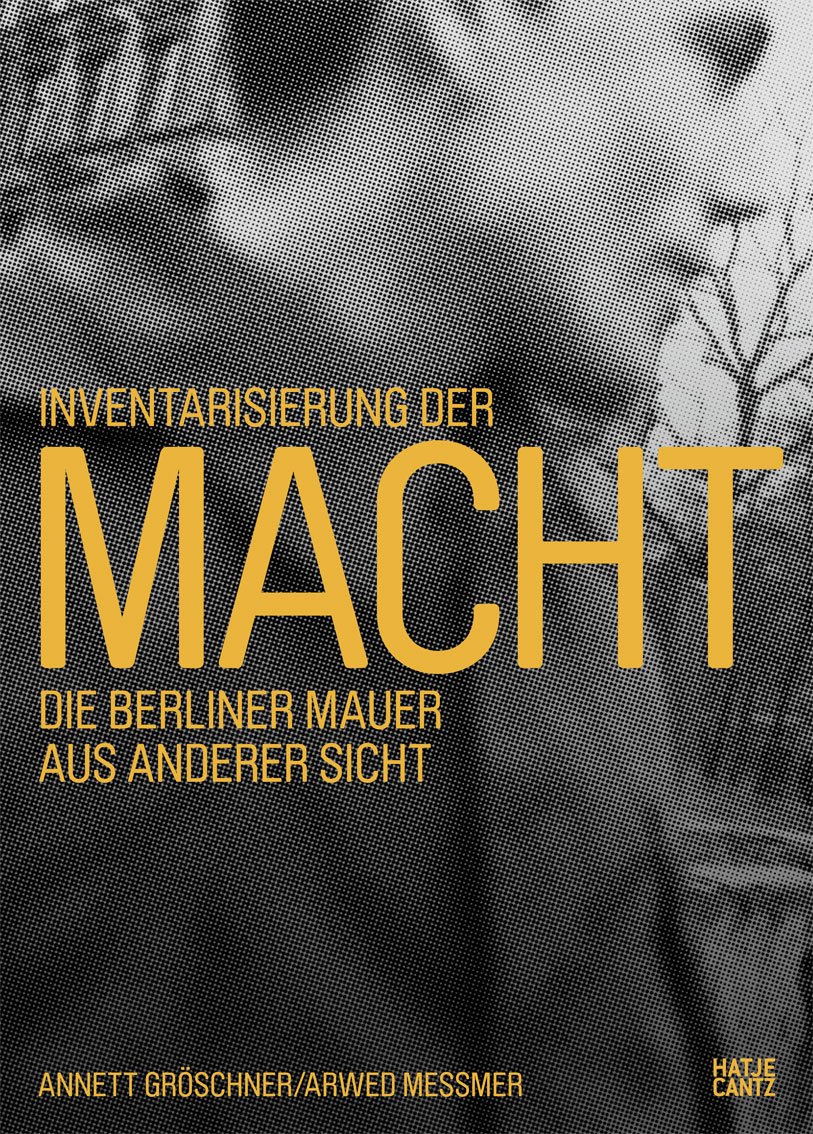
This huge and fascinating two-volume book painstakingly documents the Berlin Wall in over 1000
pages of documents and photos – many originally commissioned by the GDR authorities and discovered in archives – accompanied by bilingual English/German texts. The ugliness of this cruel piece of architecture becomes apparent as you flip through 1300 pages with incredible detail of the unknown eastern side GDR border. Volume I contains texts concerning discovered escape tunnels, interviews with arrested escapees and series of photos of watchtowers, guards and their dogs. Volume II is a photographic documentation with 700 panoramic images of the Wall seen from the GDR side, taken by border guards in 1965 and 1966 to document weaknesses in the border defences. Mostly devoid of people, the images show the brutality of the famous structure, which looked deceivingly makeshift in the early years, long before it was 'perfected' from the mid-1970s onwards into the faceless grey, tube-topped Wall we all grew to hate. The Wall was more open to illegal communication in the early years, and there's a fascinating collection of remarks and insults shouted at the border guards, which were dutifully scribbled down and archived for us to enjoy now.
”Taking stock of power - Another view of the Berlin Wall”, edited by Annett Gröschner and Arwed Messmer (Hatje Cantz, 2016, ISBN 9783775740951) can be ordered for €98 at Dussmann and other major bookshops. See also www.inventarisierung-der-macht.de/en.
The Wild 1980s
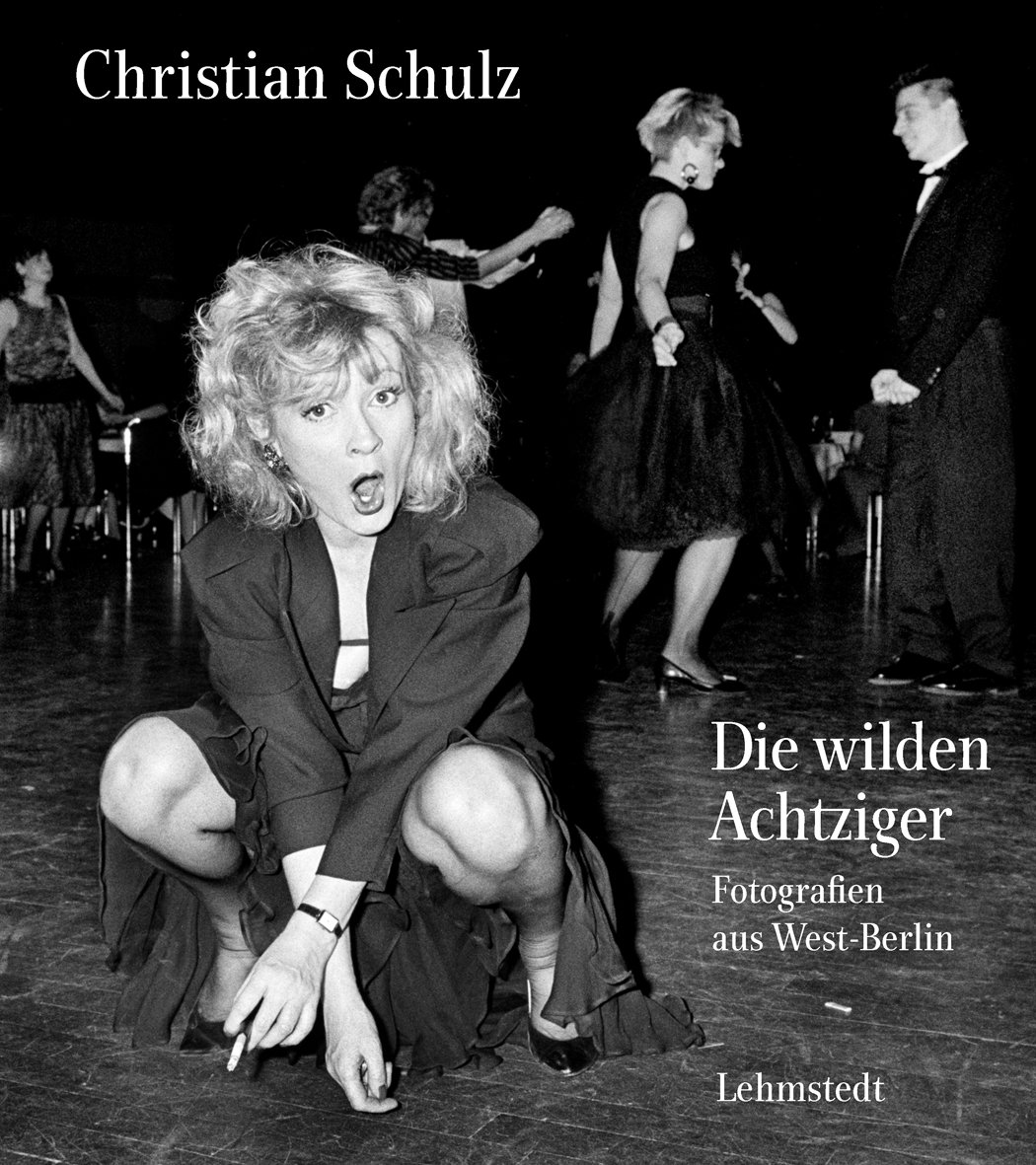
Twenty-year-old artist and photographer Christian Schulz moved from Frankfurt to West Berlin in 1981, just in time to capture the city's most legendary decade. Thousands of other artists, punks and assorted drop-outs fled stuffy West German and made their way to this heavily subsidised, walled-in beacon of freedom on the very frontier of capitalism. This was the age of house squatting, when dozens of crumbling apartment buildings across Kreuzberg were decorated with insults to the police and reasonably defended against the city's bulldozers. The 1980s was peak punk, with famed bands drifting in and out of the city, soaking up the scene. Everything was political, with world affairs taking centre stage in local events. Schulz' fascinating collection of 125 crisp black and white photos (German foreword and captions) shows how this half of the city lived, with street scenes, party pictures, ordinary Berliners, gay pride parades, riots, Turkish immigrants and of course the Wall and how it all ended.
"Die wilden Achtziger - Photos from West Berlin" by Christian Schulz, (Lehmstedt 2016, ISBN 9783957970411) is for sale for €24,90 at Dussmann and other major bookshops.
Berlin Heartbeats
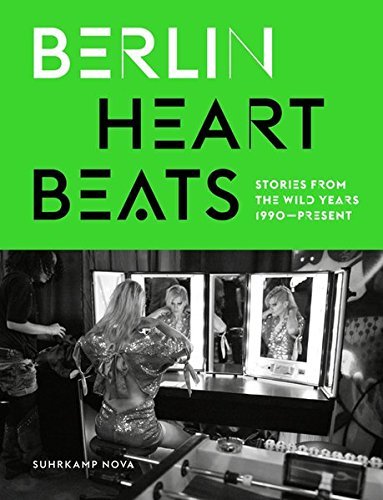
Many newcomers to Berlin may lament having missed the wild 1990s, when the city opened up, big commerce hadn't arrived yet and anything was possible. 1990s stories and images by 17 diverse Berliners come together beautifully in the fascinating German-English book "Berlin Heartbeats - Stories from the wild years".
Clubstarter Dimitri Hegemann tells about bringing house music to Berlin and setting up the legendary Tresor club in 1991; modern dance choreographer Sasha Waltz describes getting inspiration from the many spaces available in Berlin and writer Judith Hermann describes moving from West to East and how people managed to communicate and collaborate when nobody had a phone. Photos by Ben de Biel, Berghain doorman Sven Marquardt and others show what went on in the Berlin underground; the parties, riots, experimental theatre, squatted and abandoned buildings. Philipp von Recklinghausen contributes images and stories from 1992 police night shifts, encountering criminals, prostitutes and partygoers. You might regret having missed it all - but one conclusion of the book is that in essence Berlin hasn't changed, and the energy that put our split city back on the map is still there - it's up to you to make the most of it.
"Berlin Heartbeats - Stories from the wild years, 1990-present", (Suhrkamp 2017, ISBN 9783518467688) is for sale for €29,90 at Dussmann and other major bookshops.
Take me to the Lakes

You wouldn't know it while strolling around central Berlin, but this city is surrounded by lush forests and 3000 lakes. Fifty of the loveliest lakes around Berlin have been extensively sampled, tested, swum in, circumferenced, photographed and slipped into the beautifully-designed "Take me to the Lakes – The Berlin Edition". More than just a guide pointing out where to bathe north, east south and west of the city, this book uses attractive photography and seductive texts to truly inspire you to go explore. How about some lakeside relaxation at "The Pine Beach", "The Sandy Clearing", "The Beach In The Forest" or "The Secret Swings"? Each chapter also lists a few hidden getaways, charming lakeside places to spend a few days. To find your personal bathing spot, the book ends with maps, geodata and an index of types of beaches – select a Strandbad if you require more facilities than just a space by the water, or go for the Rope Swing listings to unleash your inner Tarzan and Jane.
'Take me to the Lakes' (2016, The Gentle Temper, ISBN 978-3-9818497-1-4) by Karoline Rosina and Nils Kraiczy is for sale for €19.90 at Dussmann, other major bookshops and via www.thegentletemper.com.
Berlin Calling
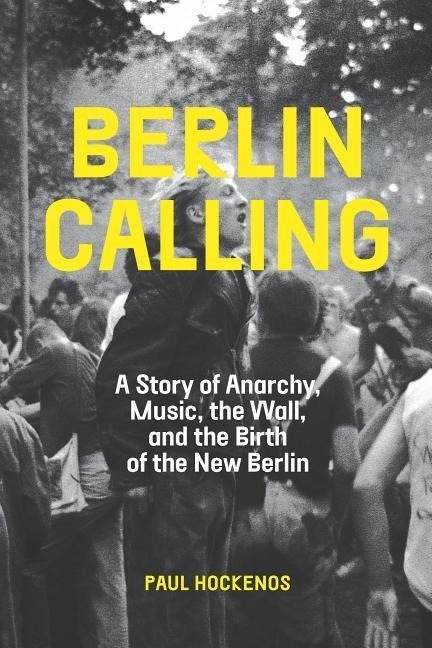
Writer and journalist Paul Hockenos arrived wide-eyed in West Berlin the the 1980s, diving deep down in the enclosed city's underground scene, befriending squatters and punks, witnessing the beginnings of techno house and watching the Wall come down (much to the horror of West Berlin's insular inhabitants who in many ways were fine with their splendid isolation). In his 2017 book - subtitled 'A Story of Anarchy, Music, the Wall, and the Birth of the New Berlin' - Hockenos delves from personal experience, interviews and other sources to describe the immense influence Berlin's rather small subcultures had on the development of both West and East Berlin, as well as on how they contributed in an essential way to the newly reunified city's post-Wall attractivity. Placing great emphasis on the arrival of major influencers David Bowie and Iggy Pop in the 1970s, he tracks the creative class's musical and political course over the following decades, with dramatic developments and even murder when it comes to confronting East Berlin's right-wing scene. An impressive story that leaves the reader with an excellent overview of what made Berlin tick over the past few decades - and where it may go from here.
"Berlin Calling", by Paul Hockenos (The New Press, 2017, ISBN 9781620971956) is available for €26 at Dussmann and other major bookshops.
Berlin Companion
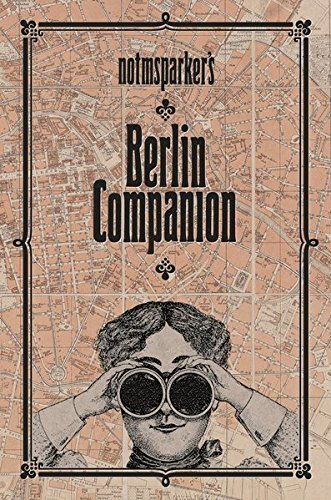
One of Berlin's most fascinating aspects is the sheer endless number of amazing and tragic stories that illuminate the city's past and present importance. Blogs delight in uncovering the weird and wonderful tales, none better than Kreuzberged.com, whose creator has now published "Notmrsparker's Berlin Companion – or I Didn't Know That About Berlin'. Her collection of Berlin facts and trivia includes everything you need to know about the names of streets and districts, remarkable buildings, public transport (ever heard of the Magnet-Bahn?), wonderful things invented in Berlin (computers, seamless condoms and artificial limbs!), illumination (30,000 gaslights), tunnels (and the bunkers beneath Viktoriapark) and of course stories concerning East and West. Essential reading for the heaps of mindboggling trivia.
'Notmrsparker's Berlin Companion' (2016, ISBN 9783864605284) by Beata Gontarczyk-Krampe is for sale for €19 via www.amazon.de.
Berlin und Breslau
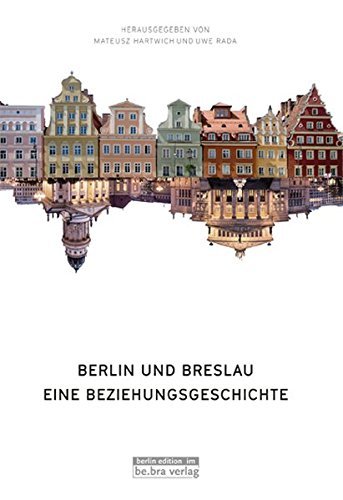
Four hours by train from Berlin, the Polish city of Wroclaw was known as Breslau until 1945, when the borders shifted around it and the city's entire population was swapped: Germans moved out, Poles (many expelled from further east) moved in. For centuries, Breslau had a special relationship with Berlin, as the second city in Prussia and birthplace of many famous Berliners, even as supplier of the very stones that built the houses and streets of Berlin. For those who read German, the engaging book Berlin und Breslau tells stories of 20 Berliners and Wroclawians, about the relationship between the two cities, the memories of residents from both cultures and how the relationship between Berlin and Wroclaw adapts to the new European setting.
'Berlin und Breslau' (2016, ISBN 9783814802220, in German), edited by Mateusz Hartwich and Uwe Rada is for sale for around €16 at Dussmann and other major bookshops.
Abandoned Berlin
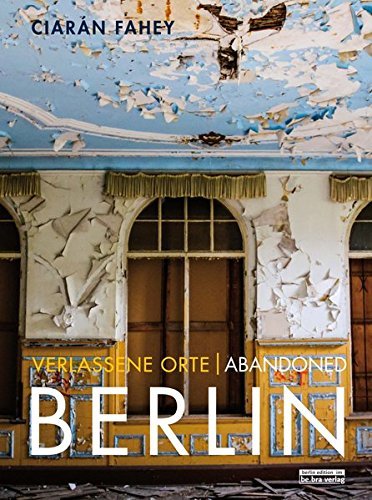
One of the most fascinating aspects of Berlin – often missed completely by casual visitors – is the existence of dozens of ruins, abandoned buildings and other relics across the city. War, politics, de-industrialisation or simply time have made these redundant. As these are often not guarded, any determined person can go and explore – though it must be noted this is not always legal or 100% safe. Irish Berliner Ciarán Fahey has been documenting his trips to relics and ruins on his blog abandonedberlin.com, and this year published an excellent book with over 25 amazing finds, illustrated with great photos. Go hunting for swastikas in the former Olympic Village, browse through papers at the abandoned Iraqi embassy, waltz through a former ballroom, or visit the mother of all ruins, the Beelitz hospital complex. Fahey wittily describes them all with plenty of history; further practical exploration advice can be found on the blog.
'Abandoned Berlin - Ruins and relics in and around Berlin' (2015, ISBN 9783814802084) by Ciarán Fahey is for sale for around €22 at Dussmann and other major bookshops, or online at www.bebraverlag.de.
Top Secret

Nearly 30,000 people worked for the Stasi, East Germany's secret service, and the vast archives they kept continue to offer historians plenty of work. Simon Menner rummaged through the public archives and dug up spectacular photographs documenting the work of monitoring. His book has large-format photos that show how Stasi officers awkwardly trained their disguise skills, martial arts, documented secret house searches and the bedrooms of subversive teenagers, and learnt how to shadow subjects. Most disturbing of all are the photos of a rather camp Stasi costume party, where pudgy, insecure-looking officials dress up as priests, hippies, artists and other subversive enemies. It makes you wonder if 'our' secret services have similar archives that will forever remain locked away.
'Top Secret' (2013, ISBN 9783775736206) by Simon Menner is for sale for around €17 at Dussmann and other major bookshops.
A Walk Along The Ku'damm
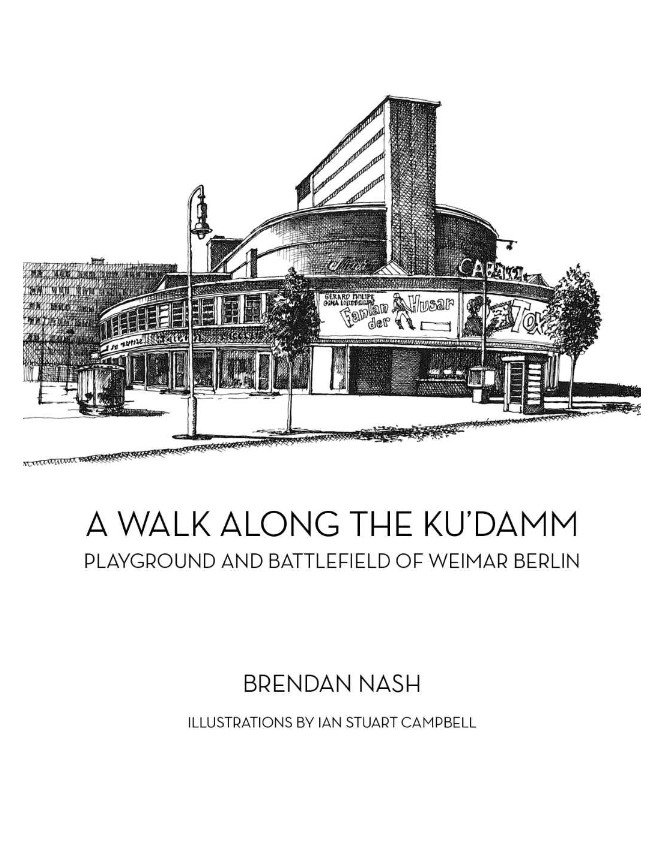
Despite all the changes in the city, the Kurfürstendamm is still Berlin's wealthiest and most glamorous boulevard, with a rich and varied history, especially during the roaring 20s. The new “A Walk Along The Ku'damm” ebook by expat Brendan Nash, the man behind the Christopher Isherwood walking tours, takes you on a walk from one end of the “Ku'damm” to the other, dishing up tales of grand buildings and their famous residents. There are stories about Marlene Dietrich getting married at the Kaiser-Wilhelm-Gedächtniskirche, now in ruins; the legendary 1000-seat Romanisches Café, Berlin’s first purpose-built cinema, and Erich Mendelsohn's striking Schaubühne theatre. Nash mentions the activities of Dada artist George Grosz, theatre-makers Rudolf Nelson, Max Reinhardt and Bertolt Brecht, musician and songwriter Walter Jurmann, nude dancer and femme fatale Anita Berber, and Josephine Baker who scandalously danced the Charleston here in 1926. The book ends with biographies of the fascinating people who made the Ku'damm truly grand. As only 43 of 235 buildings along the road survived the war, the atmospheric illustrations by Ian Stuart Campbell do much to conjure back the old Ku'damm.
“A Walk Along The Ku'damm: Playground and Battlefield of Weimar Berlin” by Brendan Nash (2015), Kindle ebook available at www.amazon.com/dp/B00SBNW7F4 for €8,99.
Finding Your Feet in Berlin - A Guide to Making a Home in the Hauptstadt
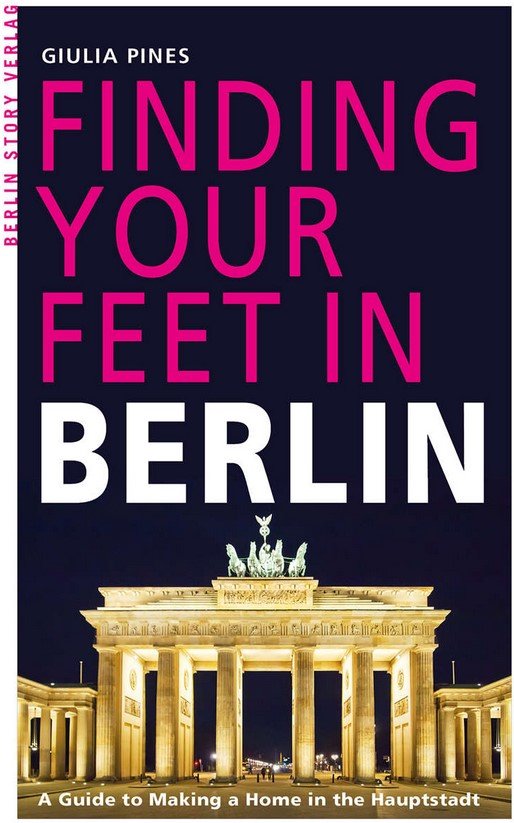
Tens of thousands of new residents arrive in Berlin every year, many seduced by the gritty charms of the city. The 192-page 'Finding Your Feet in Berlin' by the American expat writer Giulia Pines is an excellent guide to settling in the city, telling newcomers where to register, what paperwork to take care of, how to find a flat and in which district, how to get a job, choose insurance, pay taxes, and where to learn German in order to make sense of it all. With the basics taken care of, next Pines advises what to do after work, where to shop, how to entertain the kids, what to see, where to eat and drink, and how to connect with other expats and Germans. A handy weapon against the mind-numbing bureaucracy sometimes required to get very simple things done, the book does a great job of taking away many insecurities when arriving in this strange but wonderful city.
'Finding Your Feet in Berlin - A Guide to Making a Home in the Hauptstadt' (2014, ISBN 9783957230003) by Giulia Pines is for sale for around €17 (ebook €13) at the Berlin Story bookshop or via their website www.berlinstory-verlag.de, at Dussmann or other major bookshops.
Stumbling Stones in Berlin
by Aktives Museum Faschismus und Widerstand
Over 5,000 so-called stumbling stones or 'Stolpersteine' have been laid on Berlin's streets since the mid-1990s. These small bronze plaques each commemorate one victim of the Nazis, and are laid in the public pavement in front of the last voluntary place of residence. Private individuals can research, request and pay for a stone, and regular Berliners often polish them up and lay candles. They're dedicated to all kinds of people; Jews, homosexuals, members of the resistance, euthanised handicapped and elderly Germans, and many others. This new English-language book, edited by the Aktives Museum Faschismus und Widerstand, has 12 detailed neighbourhood walks linking dozens of Stolpersteine, highlighting the personal tragedies behind each stone, and the Nazi-era history of whole city districts. The well-illustrated texts come with clear directions, maps and historical photos.
'Stumbling Stones in Berlin' ( 2014, no ISBN) by the Aktives Museum Faschismus und Widerstand is for sale for €12 at Dussmann, Berlin Story, bookshops on Bayerischer Platz, and at the Aktives Museum (Stauffenbergstr. 13-14, www.aktives-museum.de).
Berlin im Aufbruch (Berlin's Renaissance)
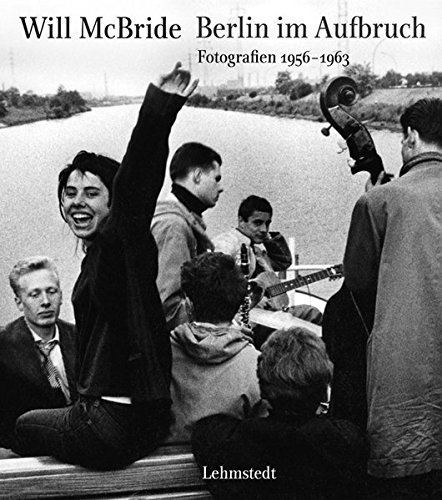
The young, snap-happy American student and artist Will McBride (1931) arrived in West Berlin in 1955, and set about capturing the post-war awakening of the city in black and white photos. Until the construction of the Berlin Wall in 1961, the sky seemed the limit for the city, and McBride crossed from West to East observing the progress of the Wiederaufbau (rebuilding), as well as the building of the Wall. Now, 120 of his photos taken between 1956 and 1963 have been collected in Berlin im Aufbruch ('Berlin's Renaissance'). What makes this book so special is that rather than documenting the city from a safe distance, McBride is 'present' in the photos, as a participant in the depicted events, getting close to workers constructing a road, women chipping mortar off bricks from bombed buildings, playing children, rock 'n roll dancers and fellow students riding a horse cart. In one photo McBride is literally present when he catches himself in the reflection of a mirror in a café, while focussing his Leica on an animated group of women. It's remarkable how timeless the themes and people are; the party in the back yard, the people at the beach and the students on the boat trip – they are us, this is now, 50 years ago.
'Berlin im Aufbruch; Fotografien 1956-1963' (Lehmstedt Verlag 2013, ISBN 9783942473675) by Will McBride is for sale at Dussmann for €29.90, and can be ordered at any other bookshop.
Pieces of Berlin
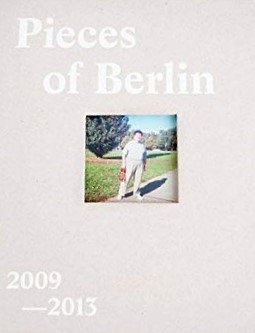
Anyone following the Pieces of Berlin photoblog is delighted every few days with a image of a strange corner of the city, with quirky titles such as 'a piece of wasteland' or a 'piece of fail'. Or with a portrait of a completely regular Berliner, from all walks of life; students, immigrants, late-night-shop-owners, homeless people, former policemen, actors; complete with a small interview about their relationship with Berlin. After five years of blogging, Austrian photographer Florian Reischauer has compiled his work in an intriguing family album for Berlin. Its full-spread photos of urban views, forgotten corners and industrial buildings are washed-out, smudged and dreamy; the resident portraits and texts are straightforward and honest, funny and sad. The 208-page book is bilingual and is designed – Berlin-style – with a concrete-like cardboard cover framing an original photo of a Berliner; a gem in the rough.
'Pieces of Berlin' (Recap Editions 2013, ISBN 9783000442278) by Florian Reischauer is for sale at www.piecesofberlin.com and at Doyoureadme (Auguststraße 28) for €27, or can be ordered at any bookshop.
Far East – the last years of the GDR
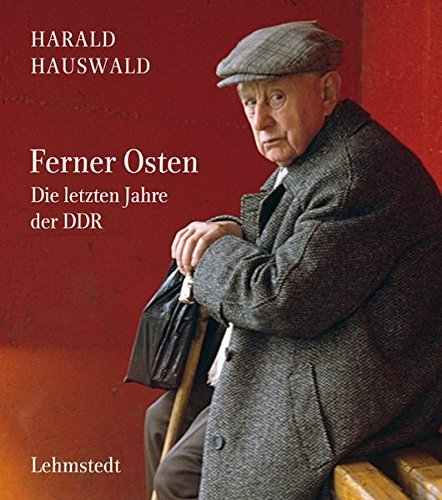
It's increasingly hard to imagine life in the GDR; the country that formally ceased to exist in 1990, as since then its society, landscapes and city streets have often changed beyond recognition. Photography books like Harald Hauswald's “Ferner Osten – Die letzten Jahre der DDR” ('Far East – the last years of the GDR') help us get an idea of what it looked like. Hauswald takes us from Berlin to neglected towns and small villages across the GDR of 1986-1990, showing beautifully composed images of children, workers, Communist parades, streets in Prenzlauer Berg, the Ostsee coast, as well as images from Berlin's alternative art and punk scene – and just a glimpse of the Berlin Wall. What makes this book special is the use of colour photography, made possible by Hausmann's semi-legal work for West German magazines, adding to the realism of the photos when most other GDR photography is monochrome. Captions are in German.
'Ferner Osten – Die letzten Jahre der DDR' (Lehmstedt 2013, ISBN 9783942473507) by Harald Hauswald is for sale for around €30 at Dussmann, and can be ordered at any other bookshop.
Diversity Destroyed. Berlin 1933–1938–1945. A City Remembers.
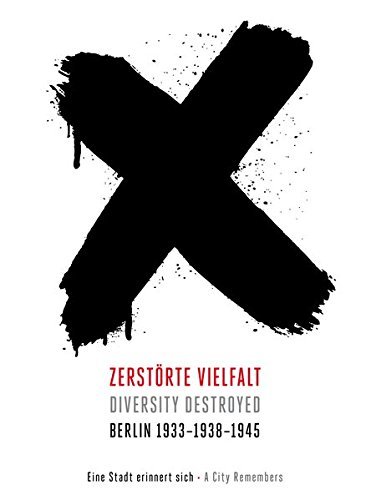
Dozens of portrait photos adorn the main section of the bilingual book “Diversity Destroyed.” Every one of them is an important contributor to Berlin's vibrant art, science or political scene. Indeed, if Facebook had been around back then, any culturally active Berliner would certainly have liked most of these people as their friends. But the sad fact is that within just a few years in the early 1930s, Berlin's cultural life was destroyed, with tens of thousands of Berliners persecuted and driven into exile, deported or murdered. The content of Berlin's 2013 'Diversity Destroyed' theme year exhibitions are now collected in this impressive book. The photos introduce people like filmer Fritz Lang, director Max Reinhardt, singer Claire Waldorff, politician Paul Loebe and writer Erich Kaestner; each with a short biography showing how Nazi rule affected - or ended - their lives. Other texts and photos describe Berlin before and after 1933, and tell stories about several places in Berlin, including brave stories of resistance.
“Zerstörte Vielfalt. Berlin 1933–1938–1945. Eine Stadt erinnert sich.” (“Diversity Destroyed. Berlin 1933–1938–1945. A City Remembers.” (ISBN 9783940231079) by Moritz van Dülmen et al is for sale for around €15 at Dussmann, the German History Museum and can be ordered at any other bookshop.
100 Favourite Places
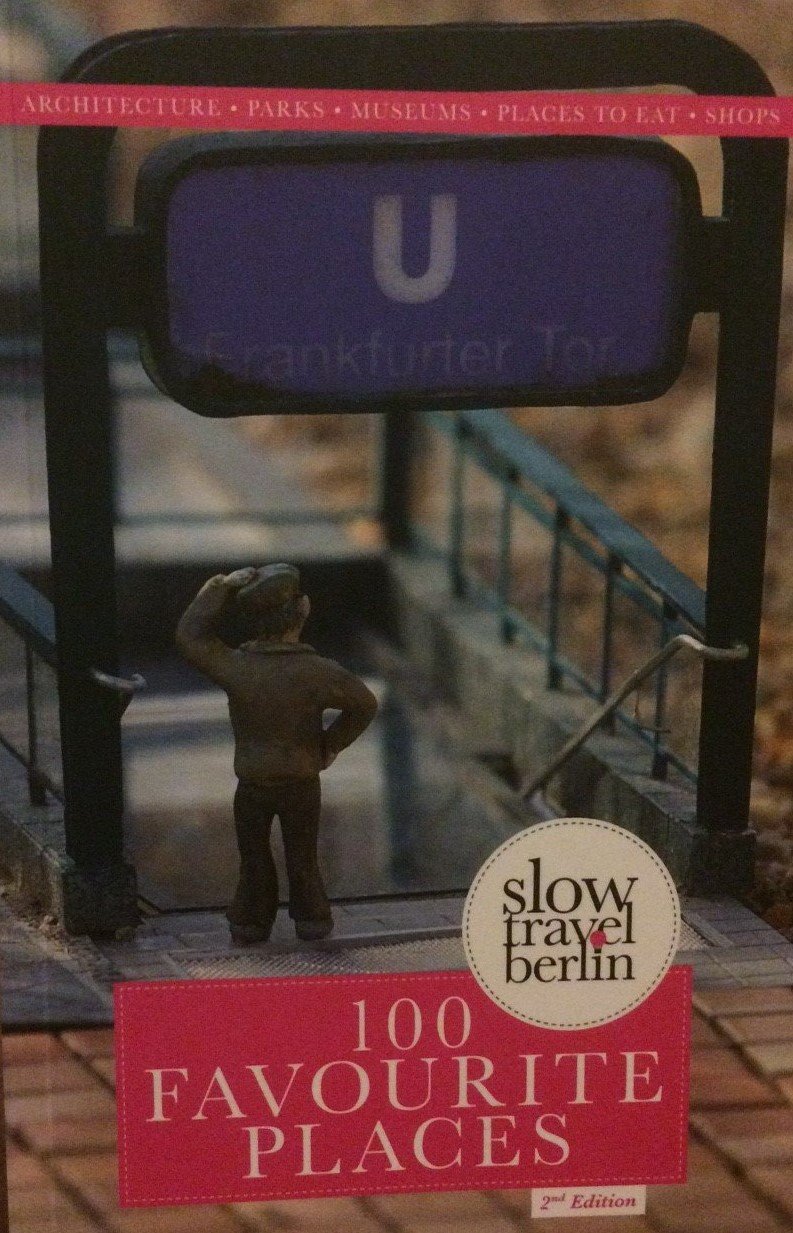
Is it possible to fall in love with a city? Photographer and urban blogger Paul Sullivan and his friends from the popular Slow Travel Berlin website suggest you can - as long as you take it slow. Their self-published book '100 Favourite Places' casually strolls past 100 remarkable spots in this endlessly fascinating city, each with a page of text and one photo. None of the major tourist attractions are listed, and the selection seems completely arbitrary at first sight; readers are pointed to a 1920s cinema organ, a revived market hall, a Charlottenburg deli, a struggling modernist suburb, a buzzing community garden, some 1980s metro murals, a button shop and a park where the kids can poke a guinea pig. But it's this randomness that encapsulates what is great about Berlin. The authors of this love letter to the city, and the reader soon enough too, know that these 100 beauty spots, bumps, scabs and scars are exactly what makes Berlin the enticing city it is today.
100 Favourite Places (ISBN 9780991011100) by editors Giulia Pines, Marian Ryan & Paul Sullivan costs €13,95 and is for sale at Dussmann (Friedrichstr. 90), Do you read me (Auguststr. 28), Pro QM (Almstadtstr. 48-50), Shakespeare and Sons (Raumerstr. 36), and online at www.slowtravelberlin.com/100-favourite-places.
Hinter der Stille
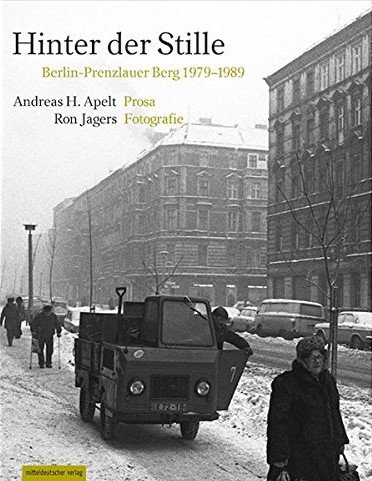
Dutch photographer Ron Jagers regularly visited East Berlin from the late 1970s; his collection of stunning black-and-white photography from the Prenzlauer Berg district forms the backbone of the lovely new book Hinter der Stille ('behind the silence'). In the 1980s, Prenzlauer Berg was East Berlin's least behaved area; artists, punks and other rebellious types somehow created a niche for themselves within the strict regime of the GDR. As an outsider, Jagers captured the essence of the district between 1979 and 1989, showing great scenes with the sooty and dilapidated houses of the district in the background. There are streets nearly void of cars, portraits of workers and locals, peeks into back yards, drab shopfronts and children at play. Writer Andreas Apelt moved to the district in 1977 and was part of this artist's scene; opposite each photo he unravels the human stories behind the crumbling façades in delicate prose. Texts are in German, but the photos alone make the book worth a look for its insight into one of Berlin's most fascinating districts.
Hinter der Stille (ISBN 9783898129992) by Ron Jagers (photography) and Andreas Apelt (text) is for sale for around €25 in Prenzlauer Berg at BötzowBuch (Bötzowstr. 27), Buchbox (Kastanienallee 88) and Georg Büchner (Wörther Str. 16), and across town in the Thalia bookshops, such as in the Alexanderplatz Alexa mall, or online via www.mitteldeutscherverlag.de.
Inside Kreuzberg
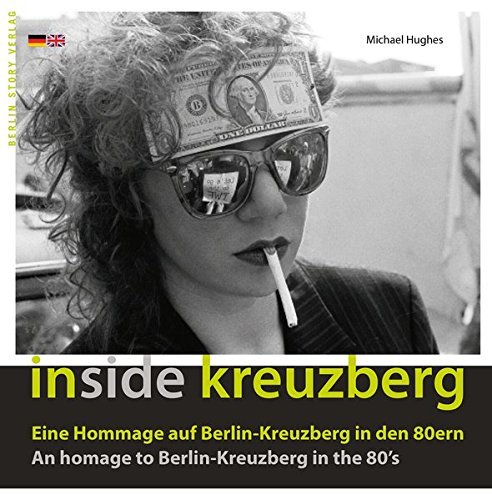
Photographer Michael Hughes moved from the UK to Berlin's Kreuzberg district in 1982. During his first week he witnessed violent riots between the police and the squatter movement, fell in love and decided to stay. “Inside Kreuzberg” is a wonderful collection of evocative black and white photos documenting the down-at-heel West Berlin district in during its anarchist glory days. There are old-fashioned shop fronts, shocking urban poverty, riots with street battles and burning cars, and excited immigrant children doing the macho pose. The Berlin Wall features as well, the depressing ribbon of concrete that cornered the district, the first attempts at graffiti art on the Wall in the late 1980s, and the 1989 opening of the Wall near Moritzplatz. It's unfortunate that the English photo captions are sometimes vague and confusing, more explanation would offer readers better insight into what makes the area tick. But wandering around Kreuzberg, the random traveller comparing the photos with the streets as they are today can still easily recognise the typical mix of locals and immigrants, and the political activism that has characterised the district since the 1960s, even though it's (slightly) cleaner and much more accessible nowadays.
'Inside Kreuzberg' (ISBN 9783863681081) by Michael Hughes is for sale for around €20 at Berlin Story and other bookshops, online at www.berlinstory-verlag.de. .
Berlin tanzt in Clärchens Ballhaus
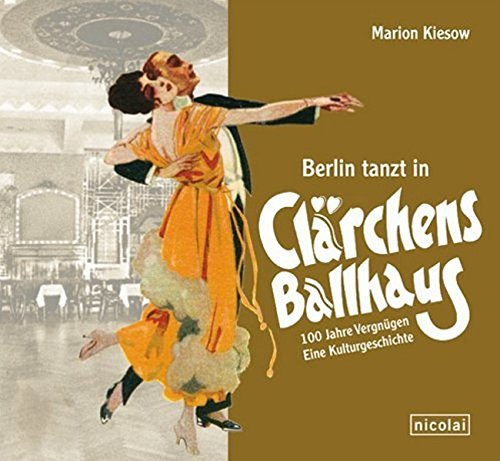
The Clärchens Ballhaus dance hall is 100 years old this September, and part of its attraction is the fact that so little has changed since it opened in 1913. It still attracts a wide range of ordinary Berliners and visitors that dance the nights away to foxtrot, waltz, swing, tango, or at weekends to the live band at the legendary schwoof parties. This new German-language book by regular guest Marion Kiesow is a fantastic history of the building, the area, the owners, the staff and guests and of ballroom dancing in general. Richly illustrated with photos, maps and items such as menus and receipts, the book sketches a detailed story of this unique institution that lived through Kaisers, dictators and democracy, and no less than eight changes of currency. Fascinating stories include those of the doorman who escaped across the Berlin Wall in 1961 but returned to East Berlin again and of the wardrobe attendant who started working here in the 1960s (both still work here), about the wartime bombing of the front house, and about Clara Bühler, 'Clärchen', the admirable woman who ran the Ballhaus for many years.
'Berlin tanzt in Clärchens Ballhaus' (ISBN 978-3-89479-784-3, €33, www.nikolai-verlag.de) by Marion Kiesow is for sale at Berlin bookshops including Dussmann and Berlin Story and at Claerchens Ballhaus.
The Beauty of Transgression
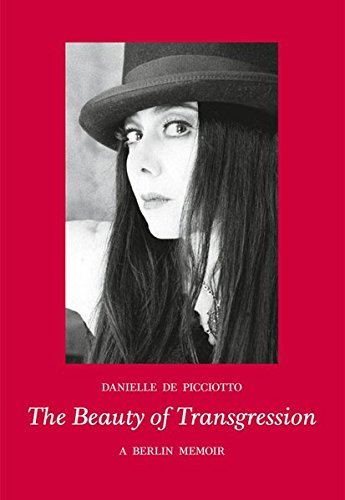
American fashion designer and artist De Picciotto, who moved to Berlin in 1987 and was part of a core group of designers, DJs, artists and dreamers that quickly discovered the possibilities of post-1989 East Berlin. She worked at many legendary bars and clubs including Tresor and E-Werk, helped organise the first Love Parade, ran an art gallery and was in bands. Her book vividly describes the incredible atmosphere, potential, artistic freedom and the surprising solidarity that characterised the fast-changing Berlin of the 1980s and 1990s. It also introduces several remarkable people from Berlin's art scene, and takes on serious questions such as confronting intolerance in villages outside Berlin, and the fear that artists living on a minimal income have of growing old. There's a fair amount of names that foreign readers won't recognise, but the book gives unique insight in a key period in the latest, most creative and perhaps happiest chapter of Berlin's turbulent history.
'The Beauty of Transgression' by Danielle de Picciotto (ISBN 978-3-89955-328-4, €22) is for sale via http://shop.gestalten.com.
Berlin Design Guide

A fascinating exploration of Berlin's artsy side. Packed with reviews, it skips from cutting-edge architecture and art, via fashion to amazing objects, ending up with an overview of great places to co-work, eat and drink. The short articles at the start of each chapter describe what's unique about Berlin, touching on the latest developments, while the reviews are ordered along walking routes, enabling easy exploration.
'Berlin Design Guide' edited by Viviane Stappmanns, Kristina Leipold (ISBN 978-3-89955-478-6) is for sale via http://shop.gestalten.com.
Berlin: The War, the Wall
Randy Richison
168 pages
This handy, pint-sized paperback covers sites related to World War II and the Cold War in mostly two-page spreads. Practical information like opening times for attractions and what public transportation serves the destination are included.
Berlin: A Portrait of Its History, Politics, Architecture, and Society
Giles MacDonough
540 pages
In our opinion, this book would be better titled, ‘Berlin: Snapshots of the random bits and pieces I researched about Berlin.’ Primary sources – letters of relatively minor characters in Berlin history – provide first-person accounts of Berlin through the ages, though often on specialist topics like cuisine, or orderliness.
Berlin: Open City
Berliner Festpiele & Architektenkammer Berlin
288 pages
A practical guide to Berlin’s historic, modern, and newest architecture. Ten routes take you through a total of 600 buildings, helping you on your way with photos, maps, and plans. The index is done by both architect and place. Every now and then a building described isn’t labelled on the accompanying maps, but this is probably the best guide for architect fans, who have much to keep track of in still-growing Berlin.
The Politics of Memory: Looking for Germany in the New Germany
Jane Kramer
293 pages
American Jane Kramer wrote these six remarkably detailed and animated essays while she was European correspondent for The New Yorker magazine. Four of the essays centre around Berlin and all include pithy accounts of people grappling with opportunities and setbacks in the reunited country.
Berlin 1925, 1946, 2000
Mark R. McGee
256 pages
This coffee table book with black-and-white photos is organised by the type of building depicted - Grand Hotels, Railway Stations & Bridges, and Cafes & Bars, to name a few sections. Sometimes a building is depicted through three time periods, sometimes another structure has replaced it by 2000.
Berlin 1945. A Documentation
Reinhard Rürup (ed)
200 pages
Translated from the German, this book heavy on primary source quotes is divided into thirds: War and the Destruction of Berlin; the Capital of the Third Reich; and Chance for a New Beginning. The many photos are accompanied by excerpts from officials’ letters, military reports, personal diaries and Hitler’s speeches, as well as graphs and charts.
Berlin. The Biography of a City
Anthony Read and David Fisher
341 pages
The snappy chapter titles of this book published in 1994 include ‘Even the bird shit is made of marble’ (covering the period 1871 to 1914) and ‘Scum on Silver Bicycles’ (the 1950s). The Wall is covered in 13 pages, the Golden Twenties in 15. The black-and-white photo insert is of poor quality for a book by a relatively well-respected writing team.
The Fall of Berlin
Anthony Read and David Fisher
513 pages
A small typeface adds to this thick account of the Allies approach of Berlin in World War II. The book is helpfully broken up into smaller sections, often as short as two or three pages. These episodes are good nuggets in themselves, which together form a unified whole.
Berlin Diaries 1940 – 1945
Marie Vassiltchikov
This Russian princess emigrated to Berlin and gracefully pulled up her bootstraps when times got tough for a woman more accustomed to high heels and the finer things in life. She worked at the German Foreign Ministry from 1940 to 1944 and had ties to those who sought to assassinate Hitler in July 1944. The diary doesn’t just provide insight into a remarkable woman, but on the suffering all endured in bombed-out Berlin.
Berlin Then and Now
Tony Le Tissier
472 pages
Glossy pages full of more documentary-style photos than artistic ones capture more ‘then’ (World War II era) than ‘now;’ the book was published in 1992. Photo captions sometimes take up as much space as the text does. Written by a man who spent 23 years in the British army, the book is published by Battle of Britain International Limited.
Berlin Noir
Philip Kerr
This volume of three stories (March Violets, The Pale Criminal, and A German Requiem) depicts an ex-cop’s beats in 1930s Berlin and post-war Vienna. Salmon Rushdie plugs Kerr as ‘brilliantly innovative.’
The Berlin Stories
Christopher Isherwood
207 pages
English writer Isherwood spent the years 1929 to 1933 in Berlin and attempted to capture the odd-ball assortment of characters he met then in two stories: Mr. Norris and Goodbye to Berlin. These tales were successfully joined to form the musical and film Cabaret, from whence so many people have adopted their own icons of the underworld in Weimar Berlin: undefeatable Sally Bowles, the slippery Emcee, and the licentious Kit Kat Club.
This is Berlin. Reporting from Nazi Germany 1938 – 1940
William L. Shirer
These are the previously unpublished reports and broadcasts of the American journalist well known for his book, The Rise and Fall of the Third Reich. ‘This is Berlin’ begins many of his pieces, which are humorous, conversational, and sarcastic.
Faust’s Metropolis: A History of Berlin
Alexandra Richie
1,107 pages
You get to cut through the swampy origins of Berlin up to the 1500s fairly quickly, and then the meaty part starts on page 40 with Berlin’s 17th-century tribulations. Twists and turns don’t let up until 1998 (page 858). The two hundred pages of notes remaining let you know what this ambitious historian spent years researching.
Jews in Berlin
Andreas Nachama (ed), Julius H. Schoeps and Hermann Simon
273 pages
Berlin had one of Germany’s largest populations of Jews before World War II. The chronology at the back of the well-illustrated book begins with the year 1244 and ends with 2000 - the year the first pupils graduated from The Jewish High School. Six authors contributed to this book full of prints, photos, cartoons, ads, and even organisational charts.
The Wall - The People’s Story
Christopher Hilton
452 pages
Hilton interviewed everyday Berliners, politicians and military personnel to weave together this narrative that reads like the Wall’s own diary.
The Fall of Berlin 1945
Antony Beevor
490 pages
British military historian Beevor covers the months of January to May, from the Soviet and German armies’ shenanigans to the plight of civilians. It’s a brutal account that will appeal to two different audiences – military history buffs and social historians – while making each swallow a few details or viewpoints that each side might not otherwise prefer to read.
The Ghosts of Berlin: Confronting German History in the Urban Landscape
Brian Ladd
New York has grappled the past several years with what to do with just one significant and destroyed building site. The question surrounding whether to rebuild, preserve, or move on has dogged Berlin urban planners and architects ever since 1945. When it comes to structures erected by Fascists and hard-line Communists, the issues of historic significance versus practical modern land use become even more loaded. With entertaining text, Ladd welcomes even neophytes to a domain normally presided over by coolly intellectual architects.
Russian Disco, Tales of Everyday Lunacy on the Streets of Berlin
Wladimir Kaminer
171 pages
Roughly 49 vignettes capture Berlin through the eyes of this hip immigrant from Moscow. Kaminer has become somewhat of scene personality, DJing Russendisko nights at Mitte’s retro Kaffee Burger.
1936. The Olympic Games and National Socialism
Reinhard Rürup
248 pages
This engaging book, in both English and German, describes the build-up to and controversies surrounding the 1936 Summer Olympic Games in Berlin. The attractively designed book comes from an exhibition that included photos, ads, and political cartoons regarding not only the Olympics, but the Nazi regime as well.
The Innocent
Ian McEwan
270 pages
A fascinating and chilling Cold War novel about a British technician who is sent to Berlin in the 1950s to work on a top-secret tunnel that is built under the Soviet zone to tap phone lines to Moscow. Based on the story of a real spy tunnel in Rudow.
Stasiland. True Stories From Behind the Berlin Wall
Anna Funder
288 pages
In the early 1990s, Australian Anna Funder was the only person at her Berlin TV station interested in stories former East Germans might have had to tell. She discovered that those who fell into the web of the State Security Service (Stasi) had incredible, horrifying stories. She has a fiction writer's gift for words and has transformed her interviews with scores of East Germans into an engrossing read. Nominated for the Guardian First Book Award 2003.


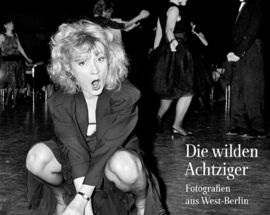
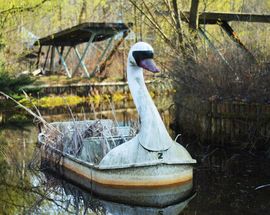
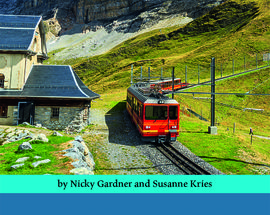
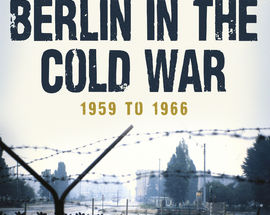

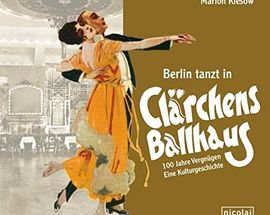
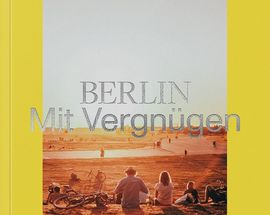
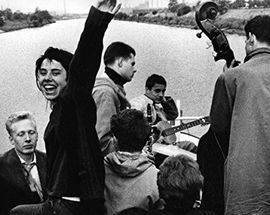
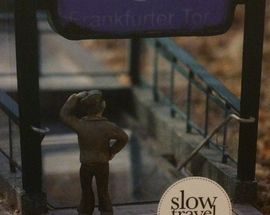
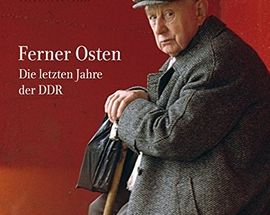
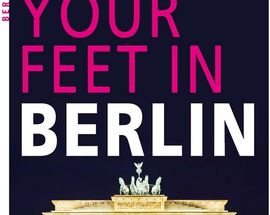
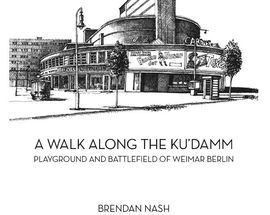
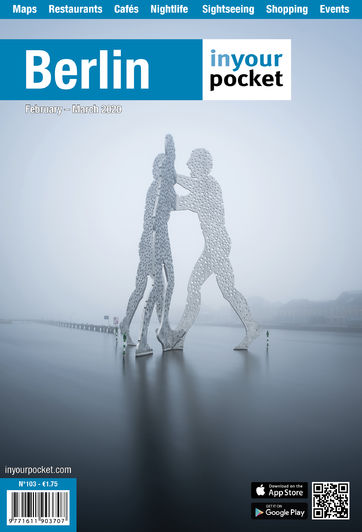


Comments